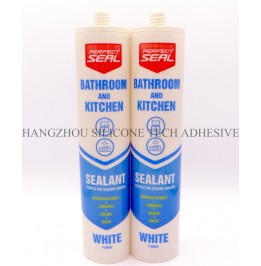Bathroom sealants play a critical role in preventing water damage by creating watertight joints around sinks, showers, tubs, and tiles. Over time, exposure to moisture, cleaning chemicals, and temperature fluctuations can degrade their performance. Regular inspections help identify early signs of wear, ensuring timely repairs and maintaining long-term protection.

The ideal inspection cycle for bathroom sealants depends on several variables, including usage patterns, environmental conditions, and the age of the sealant. Understanding these factors ensures inspections are neither too frequent nor too infrequent, optimizing maintenance efficiency.
Bathrooms with heavy daily use, such as those in family homes or commercial facilities, experience more wear on sealants. Frequent cleaning, splashing water, and physical contact accelerate degradation. In contrast, guest bathrooms or rarely used spaces may require less frequent checks. Adjusting inspection intervals based on usage intensity prevents overlooking early damage in high-risk areas.
Humidity levels, ventilation, and cleaning habits significantly impact sealant longevity. Poorly ventilated bathrooms trap moisture, creating a breeding ground for mold and weakening adhesive bonds. Harsh cleaning agents, such as bleach or abrasive scrubs, can erode sealant surfaces over time. Bathrooms exposed to these conditions should undergo more frequent inspections to catch deterioration before it leads to leaks.
Certain visual or tactile cues signal the need for urgent evaluation, even if the scheduled inspection period hasn’t arrived. Recognizing these warning signs helps prevent minor issues from escalating into costly repairs.
Sealants that develop yellowing, black spots, or a fuzzy texture often indicate mold or mildew infestation. These microorganisms thrive in damp environments and can compromise the sealant’s structural integrity. Discolored areas may also suggest chemical reactions with cleaning products, weakening the material. Inspecting for these signs every few weeks in high-humidity bathrooms ensures prompt remediation.
Visible cracks, gaps, or separation from surfaces are clear indicators of sealant failure. Cracks may form due to thermal expansion and contraction, while peeling often results from poor adhesion during installation. Shrinkage, where the sealant pulls away from edges, creates pathways for water infiltration. Monthly visual checks in areas prone to movement, such as shower corners, help detect these issues early.
Seasonal changes and local climate conditions influence how often bathroom sealants should be inspected. Adapting the schedule to account for these variables ensures year-round protection.
In regions with high summer humidity, sealants absorb more moisture, increasing the risk of mold and swelling. Conversely, dry winter air can cause materials to contract, potentially creating gaps. Inspecting sealants at the start of each season—spring and fall—allows adjustments for climate-related stress. For example, reapplying sealant in shrinking joints before winter prevents leaks during colder months.
Bathrooms near coastlines face salt-laden air, which accelerates corrosion and sealant breakdown. High-altitude areas may experience greater temperature swings, straining materials. In these environments, bi-monthly inspections are advisable to address salt damage or thermal stress promptly. Using dehumidifiers or improving ventilation can also mitigate climate-related wear.
Homeowners and facility managers can perform basic sealant checks without professional tools. These methods help identify problems before they require extensive repairs.
Run a finger along the sealant line to feel for rough patches, softness, or gaps. Healthy sealant should feel firm and smooth. Use a flashlight to inspect dark corners or under cabinets for hidden cracks or mold. Pay attention to areas around faucets, drains, and tile grout, as these zones experience frequent water exposure.
After cleaning the bathroom, run water along the sealant joints and observe for drips or pooling beneath the surface. A slow leak may not be immediately visible but can cause long-term damage. Conducting this test monthly, especially in older bathrooms, helps uncover subtle weaknesses in the seal.
Beyond regular inspections, adopting proactive maintenance practices extends the lifespan of bathroom sealants and reduces the frequency of repairs.
Avoid abrasive cleaners or steel wool, which scratch and weaken sealant surfaces. Instead, use soft cloths and mild, pH-neutral cleaners. After cleaning, dry the area thoroughly to prevent moisture buildup. These habits minimize chemical and physical damage, preserving the sealant’s integrity.
Small cracks or gaps can often be filled with a compatible sealant caulk without replacing the entire joint. Keeping a supply of sealant repair material on hand allows for quick fixes. Ignoring minor damage leads to larger failures, necessitating more invasive and costly repairs later.
By tailoring inspection intervals to usage, climate, and visible wear indicators, bathroom owners can maintain effective waterproofing. Combining routine checks with gentle maintenance ensures sealants remain durable, protecting against water damage and mold growth over time.
Copyright 2019 by Hangzhou Silicone Tech Adhesive Co., Ltd. All rights reserved.
Bathroom Sealant | Acrylic Sealant | Dow Corning 795 | Aquarium Sealant | Dow Corning 732 | Clear Silicone Sealant | Polysulfide Sealant | Glazing Sealant | Mirror Sealant | IG Sealant
Powered by Onepound